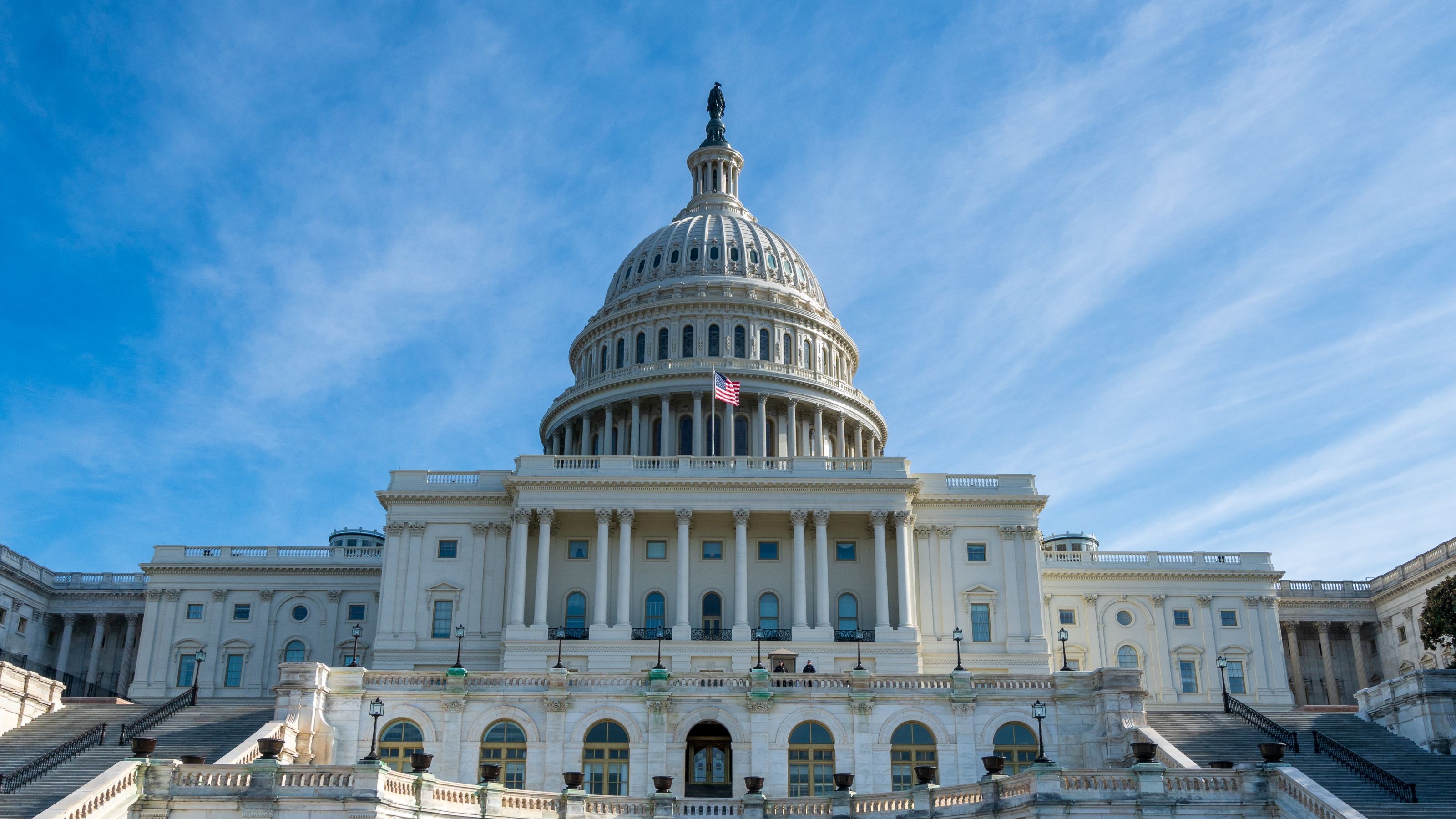SALT Cap Increase? What to Expect in 2025 Tax Reform
Some lawmakers say it’s past time to increase the $10,000 cap on state and local tax deductions.


Discussions about the state and local tax deduction (SALT) continue.
One reason? Lawmakers are negotiating 2025 tax reform since Republicans control the White House and both chambers of Congress. And President Trump and several GOP lawmakers would like to see adjustments to the SALT cap.
- The SALT deduction allows taxpayers who itemize to deduct state and local taxes from their federal taxable income.
- The deduction was capped at $10,000 by the Tax Cuts and Jobs Act (TCJA), ushered in by Donald Trump in his first stint as president.
- Since then, the SALT cap has been a point of contention for many in high-tax states who argue the deduction limit disproportionately affects them.
But it’s important to note that the state and local tax deduction isn’t just an issue for people in so-called “blue states.”
From just $107.88 $24.99 for Kiplinger Personal Finance
Become a smarter, better informed investor. Subscribe from just $107.88 $24.99, plus get up to 4 Special Issues

Sign up for Kiplinger’s Free Newsletters
Profit and prosper with the best of expert advice on investing, taxes, retirement, personal finance and more - straight to your e-mail.
Profit and prosper with the best of expert advice - straight to your e-mail.
Several Republican lawmakers have said they wouldn't support 2025 tax reform that doesn’t significantly lift the cap, while the U.S. House of Representatives initially proposed a SALT write-off as high as $30,000.
But, just before passing their version of Trump's One Big Beautiful bill, House GOP on May 22, lawmakers reached a deal to increase the cap to $40,000 with an income limitation.
Meanwhile, Republican lawmakers in the U.S. Senate want to temporarily raise the deduction cap to $40,000, with a five-year sunset and an income phaseout at $500,000, but with certain loopholes remaining for business owners in states that permit them.
Here’s what all this could mean for you and your tax bill.
SALT deduction explained
The SALT cap was originally introduced to offset tax cuts in the TCJA, signed into law during Trump's first term in 2017. However, the $10,000 cap has faced criticism for placing an undue burden on residents of states with higher taxes, which tend to lean Democratic.
However, the dynamics surrounding the SALT deduction cap are complex, particularly when it comes to how some Republican lawmakers see its impacts.
- The SALT cap is often seen as penalizing residents in "blue states" with high state and local taxes. Data show California, Illinois, New Jersey, New York, and Pennsylvania account for most SALT deduction claims. (However, Texas, a "red state," is included in that data set.)
- For example, before the SALT cap, the average SALT deduction in Connecticut was around $20,900 according to the National Association of Realtors. Just after the $10,000 limit was enacted, the average SALT deduction in CT dropped to about $9,700. So, some Connecticut taxpayers saw a nearly 58% deduction decrease.
- However, some Republicans representing those states have become vocal about the need to raise or eliminate the cap. The urgency is heightened because the SALT deduction limit is set to expire at the end of 2025, if Congress doesn't act.
The cost of a SALT cap repeal (more on that below) and questions surrounding who benefits most (Tax Policy Center says high-income earners) are also key issues to be addressed in 2025.
GOP stance on SALT cap: "No SALT, No Deal"?
Rep. Mike Lawler (R-N.Y.) emerged as a key figure in this debate this legislative cycle.
He has emphasized that his backing and support from other representatives from New York, New Jersey, and California are essential for passing tax legislation. Lawler remarked, "I’ve been very clear. I will not endorse a tax proposal that does not remove the cap on SALT."
It’s also worth noting that Rep. Tom Suozzi (D-N.Y.), also known as "Mr. SALT," has been a prominent advocate for the restoration of the SALT Deduction for some time.
His mantra, "No SALT, no deal," became a rallying cry among some Democratic lawmakers from high-tax states.
SALT Cap income limit
Former President Donald Trump also weighed in. As Kiplinger reported, Trump called for lifting the SALT cap during his 2024 presidential campaign events, stating an intention to "get SALT back."
At the time, those comments brought mixed reactions. Some viewed it as a necessary pivot for constituents in high-tax states, while others criticized him for previously supporting the very legislation that imposed the cap.
Since then, lawmakers and Trump affirmed that some adjustment to the SALT cap is a priority in what he has dubbed the "one big beautiful bill" addressing taxes, border security, and more.
The House GOP’s version of the legislation, passed the House on May 22, would raise the SALT deduction cap to $40,000 per household earning up to $500,000.
- For incomes above that limit, the deduction cap would remain at $10,000.
- Both the $40,000 cap and the $500,000 income threshold will increase by 1% annually through 2033.
- Note: These details could change as the bill moves through the Senate. For example, as mentioned, the SALT proposal in the Senate bill would temporarily raise the deduction cap to $40,000, with a five-year sunset and an income phaseout at $500,000. However, certain loopholes would remain for business owners in states that permit them.
Cost of repealing or modifying the SALT cap
What about the cost? Eliminating the SALT cap could cost an estimated $1.2 trillion over ten years, according to the Committee for a Responsible Budget. That price tag raises concerns among some fiscal conservatives about federal revenue and deficit reduction.
Also, according to the Tax Policy Center, raising the SALT cap to $20,000 (or $40,000 for married filers) without an income cap could cost the federal government about $600 billion over ten years. While adding an income cap (e.g., $400,000 or $500,000) would reduce that cost, the exact reduction would depend on the final policy design.
So, that underscores another key issue in the onging tax reform debate: fiscal responsibility.
The Congressional Budget Office (CBO) has estimated that just making the TCJA permanent (a big item on Trump’s tax wish list) could cost more than $4 trillion over ten years.
Potential changes to the SALT deduction
As negotiations and positioning continue in Congress regarding potential new tax legislation, it remains to be seen which version of the SALT cap will be part of any final legislation.
The debate continues as the Senate works toward a vote on their version of the bill, which, if passed, would need to return for approval in the House before President Trump could sign.
Remember: Any changes to the SALT deduction could impact taxpayers nationwide, particularly those in states with higher tax burdens, so keep an eye on tax changes involving this and other key deductions.
This article has been updated to include activity in the U.S. Senate.
Related
Profit and prosper with the best of Kiplinger's advice on investing, taxes, retirement, personal finance and much more. Delivered daily. Enter your email in the box and click Sign Me Up.

Kelley R. Taylor is the senior tax editor at Kiplinger.com, where she breaks down federal and state tax rules and news to help readers navigate their finances with confidence. A corporate attorney and business journalist with more than 20 years of experience, Kelley has covered issues ranging from partnerships, carried interest, compensation and benefits, and tax‑exempt organizations to RMDs, capital gains taxes, and income tax brackets. Her award‑winning work has been featured in numerous national and specialty publications.
-
 I'm retired with $2.2 million saved and work 2 retail shifts a week for fun. My young colleague just got her hours cut, and I don't need the money. Should I quit so she can have my shifts?
I'm retired with $2.2 million saved and work 2 retail shifts a week for fun. My young colleague just got her hours cut, and I don't need the money. Should I quit so she can have my shifts?We asked certified financial planners for advice.
-
 Could an Annuity Be Your Retirement Safety Net?
Could an Annuity Be Your Retirement Safety Net?More people are considering annuities to achieve tax-deferred growth and guaranteed income, but deciding if they are right for you depends on these key factors.
-
 Older Taxpayers: Don't Miss This Hefty (Temporary) Tax Break
Older Taxpayers: Don't Miss This Hefty (Temporary) Tax BreakIf you're age 65 or older, you can claim a "bonus" tax deduction of up to $6,000 through 2028 that can be stacked on top of other deductions.
-
 Tax Refund Alert: House GOP Predicts 'Average' $1,000 Payouts in 2026
Tax Refund Alert: House GOP Predicts 'Average' $1,000 Payouts in 2026Tax Refunds Here's how the IRS tax refund outlook for 2026 is changing and what steps you can take now to prepare.
-
 New IRS Changes to FSA Contribution Limits for 2026: What to Know
New IRS Changes to FSA Contribution Limits for 2026: What to KnowHealth Care Flexible Spending Accounts have tax advantages worth looking into, especially in light of new IRS changes.
-
 Is a New $25,000 Health Care Tax Deduction Coming in 2026?
Is a New $25,000 Health Care Tax Deduction Coming in 2026?Tax Policy A proposal from GOP Sen. Josh Hawley adds to the chatter about health care affordability.
-
 Are You Middle-Class? Here's the Most Tax-Friendly State for Your Family
Are You Middle-Class? Here's the Most Tax-Friendly State for Your FamilyTax Tips We found the state with no income tax, low property tax bills and exemptions on groceries and medicine.
-
 Costco Sues Over Trump Tariffs: What Could That Mean for Prices in 2026?
Costco Sues Over Trump Tariffs: What Could That Mean for Prices in 2026?Tariffs The retailer is making headlines not just for its famous hot dog and gold bars but for suing the Trump administration over tariffs.
-
 Social Security Benefits Quiz : Do You Know the IRS Tax Rules?
Social Security Benefits Quiz : Do You Know the IRS Tax Rules?Quiz Social Security benefits often come with confusing IRS tax rules that can trip up financially savvy retirees and near-retirees.
-
 New 2026 Tax Change Could Mean More for Your IRA and 401(k) Savings
New 2026 Tax Change Could Mean More for Your IRA and 401(k) SavingsRetirement Savings Here's how the new IRS inflation adjustments will increase the contribution limits for your 401(k) and IRA in the new year.
-
 Capital Gains Tax Quiz: How Well Do You Really Know IRS Investment Tax Rules?
Capital Gains Tax Quiz: How Well Do You Really Know IRS Investment Tax Rules?Quiz Take our capital gains tax quiz to test your investment taxes knowledge. Learn about loss rules, holding periods, and tax incentives that could impact your savings.